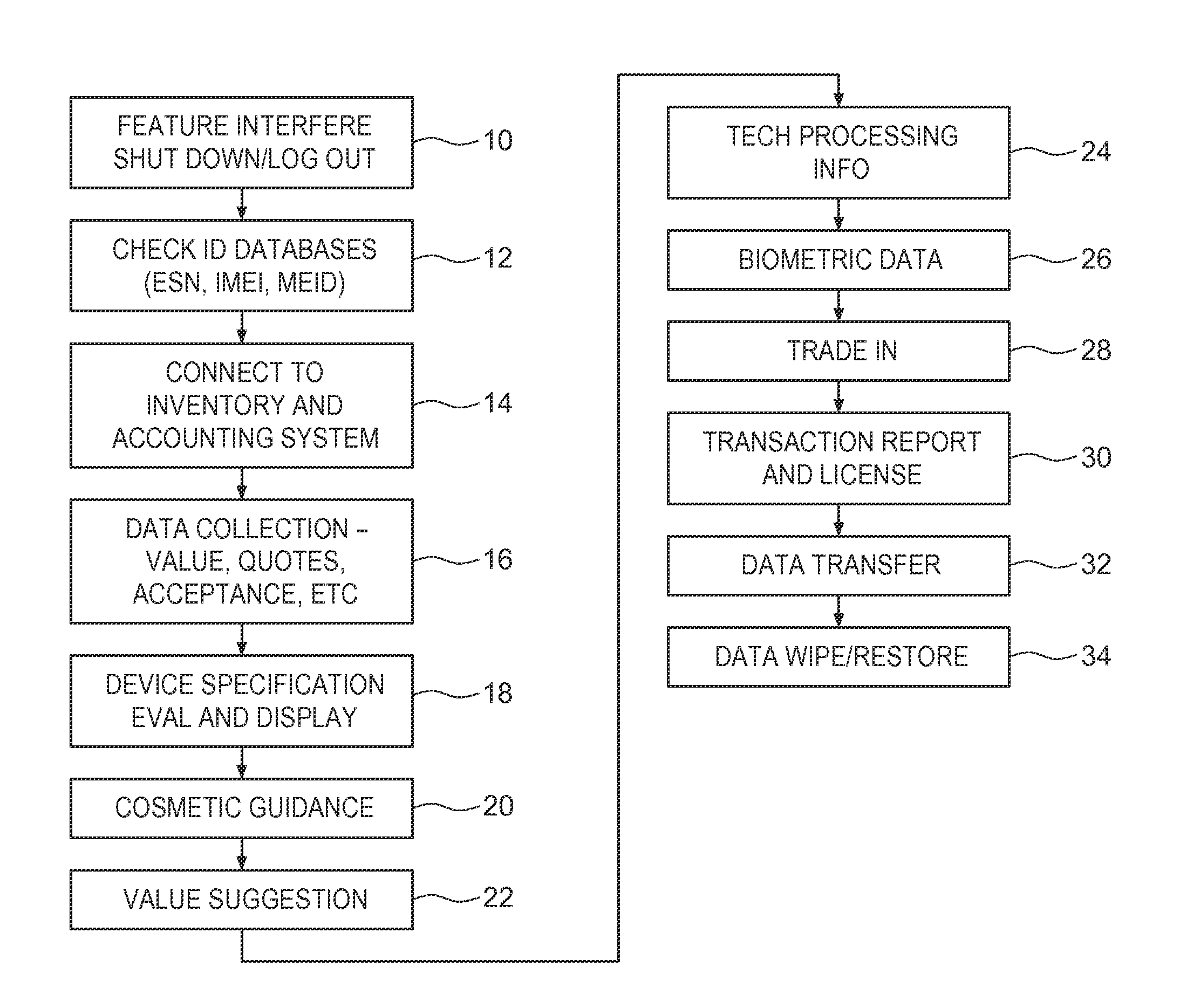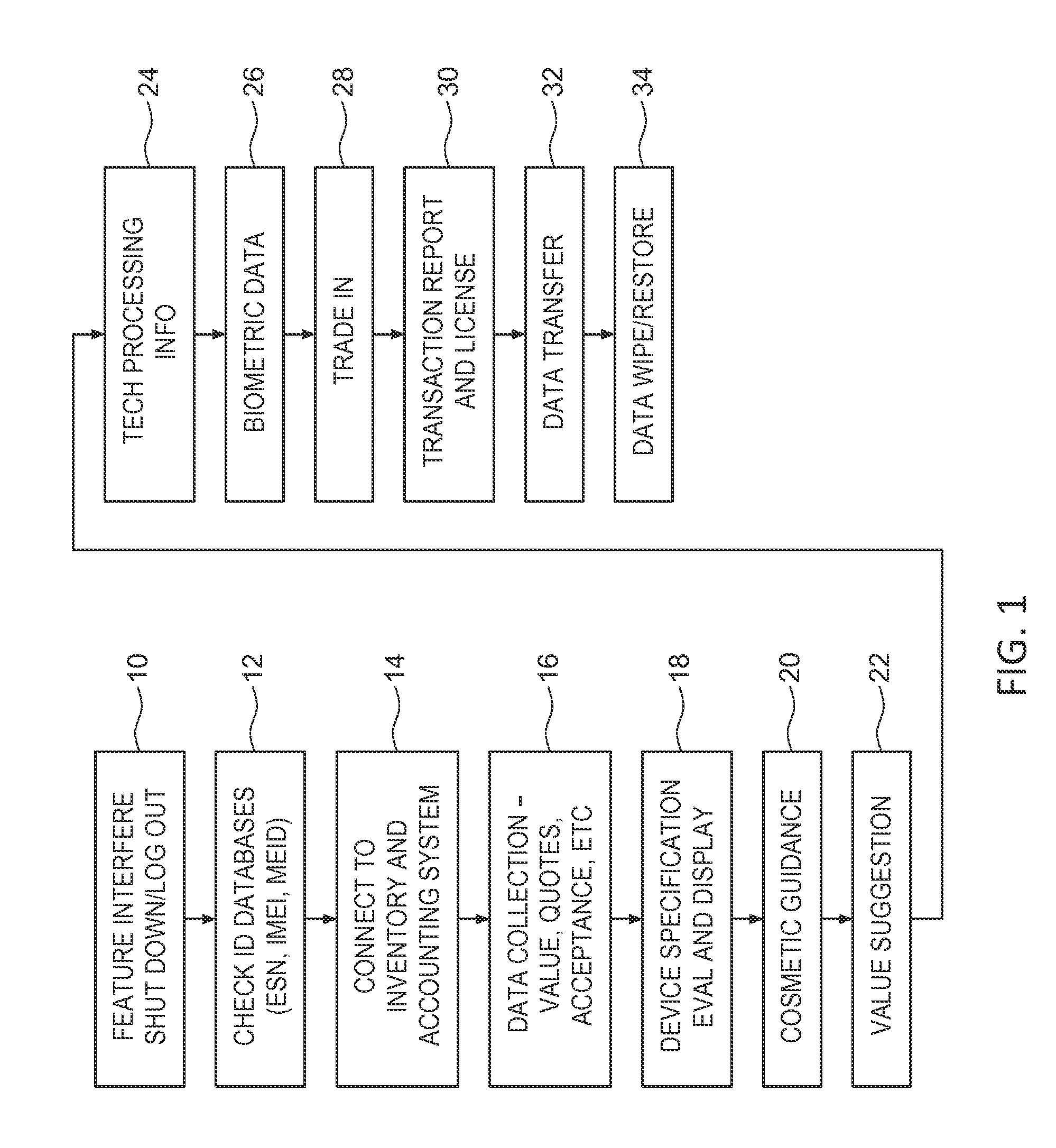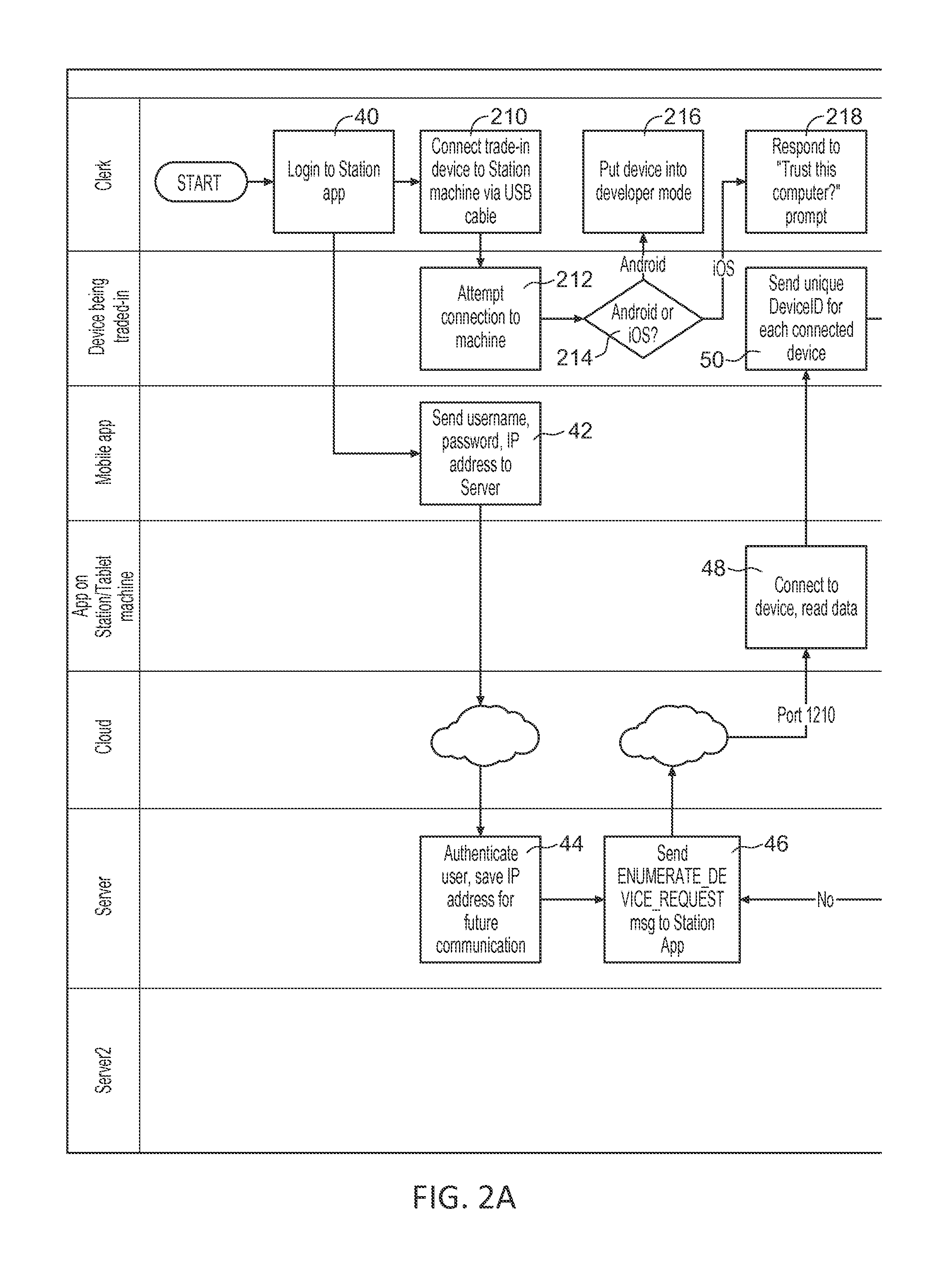Retail station for e-device identification, assessment and trade in
a technology for e-devices and retail stations, applied in the field of electronic device identification and assessment, can solve problems such as reducing the revenue of retailers, reducing the risk of credit or refund, and multiple risk areas
- Summary
- Abstract
- Description
- Claims
- Application Information
AI Technical Summary
Benefits of technology
Problems solved by technology
Method used
Image
Examples
Embodiment Construction
[0020]An embodiment of the invention is a retail station for electronic device identification and assessment. “Retail” is used broadly herein, and includes standard retail locations such as electronics stores and phone and data carrier outlets, but also can includes any location in which value can be exchange for an electronic device. As an example, schools often provide students with electronic devices to use during a limited period. The evaluation upon return can determine whether the user receives a deposit credit or some other type of value. This can be considered a retail transaction within the meaning of this description. “Station” as used herein includes specially configured retails units with processors and software for performing retail trade in transactions in accordance with the invention and general purpose tablet computers including such software for performing retail trade in transactions.
[0021]Preferred retail stations include software and interfaces to other software...
PUM
 Login to View More
Login to View More Abstract
Description
Claims
Application Information
 Login to View More
Login to View More - R&D
- Intellectual Property
- Life Sciences
- Materials
- Tech Scout
- Unparalleled Data Quality
- Higher Quality Content
- 60% Fewer Hallucinations
Browse by: Latest US Patents, China's latest patents, Technical Efficacy Thesaurus, Application Domain, Technology Topic, Popular Technical Reports.
© 2025 PatSnap. All rights reserved.Legal|Privacy policy|Modern Slavery Act Transparency Statement|Sitemap|About US| Contact US: help@patsnap.com



